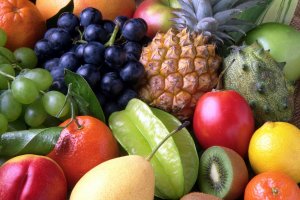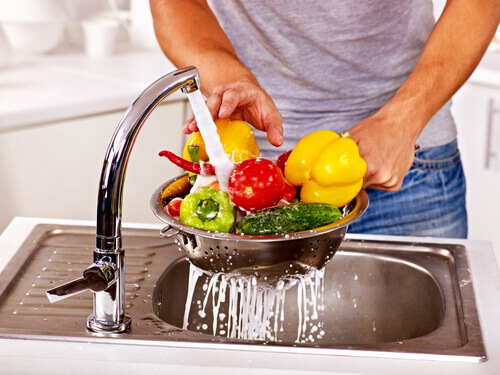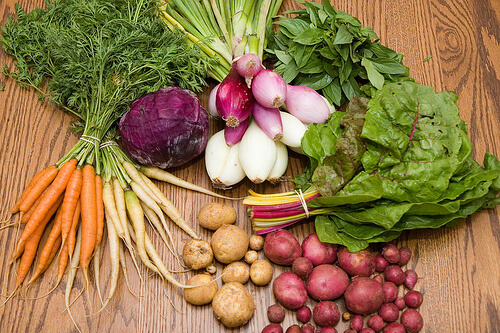Are There Pesticides in Your Food?


Reviewed and approved by the doctor José Gerardo Rosciano Paganelli
When we stop to think for a moment, a lot of the food that we eat that comes from the fields.
Going beyond fruits and vegetables, we have to remember that many foods contain ingredients that come from crops.
Consider this example: take a sandwich, its bread is made using corn products and corn comes from crops. This is just one of the multitude of examples that we can find.
In most countries, farming is done by industrial agriculture. This type of agriculture uses pesticides in its practice. These pesticides imply a set of toxic substances.
Currently, there still isn’t a norm that establishes a maximum limit for pesticide residue that can remain in foods. On a further note, with no norm, there’s no way to guarantee consumers products free from pesticides.
According to the Food and Agriculture Organization of the United Nations (FAO), countries use an average of 4.55 tons of pesticides a year. These pesticides are split up into fungicides, herbicides and insecticides.
Possible health problems

Pesticides can cause different health problems.
The chance of developing this kind of problem as a consequence of using pesticides depends on two factors. The first is the toxicity of the pesticide and the second, the quantity of exposure.
In order for a pesticide to affect the consumer’s health, the person needs to be in contact with it in some way, such as orally or by breathing. It can also can affect us through skin or eye contact.
While a toxic pesticide might be used in an area close to your home, the risk is actually low.
We have to remember that pesticides might contain more than one ingredient and that would alter it’s toxicity level.
To see the toxicity level, all you would have to do is look for the key word on the label as it’s an indicator of the product’s toxicity.
All registered pesticides must have warning words such as “danger” or “warning” on their label. That word reflects the product’s level of toxicity.
- In the products that we see, the ones showing the word “caution” have the lowest levels of toxicity.
- Products that show the word “warning” indicate a medium-level of toxicity.
- Lastly, the word “danger” is on labels of the most toxic products.
Also read: 7 Toxic Items in Your Home
The most vulnerable people

There are certain people who are more vulnerable to these products than others. Among them, are the elderly, people with certain medical conditions, pregnant women and children.
To reduce the chances of experiencing a problem while using or consuming products with pesticides, you have to look for ways to reduce exposure or choose a less toxic product.
You should always read the product labels and follow any instruction to practice personal safety.
If you’re going to do any kind of gardening, or if you’re going to be exposed to these products, you should use gloves and protective goggles.
Ecological farming, the big hope

Taking all of this into consideration, ecological farming is a huge hope. It would be a kind of agriculture that combines science and the best of modern innovation with consideration for nature and biodiversity.
Ecological farming could, first and foremost, provide healthy produce. In addition, it’s a type of farming that protects soil, water and the climate.
This agriculture doesn’t pollute the environment with chemical substances. Neither does it use genetically modified crops.
Visit this article: 5 Best Cleaning Solutions Using Baking Soda and Vinegar
Conclusion
To wrap up, if we want to know that quantity of pesticides that our food could harbor, it’d be better to just look at the labels of the pesticides themselves.
And if we want to prevent toxins from building up in our bodies, we should opt for ecological products.
By doing so, we could reduce or even rid our bodies of these harmful toxins.
It’ll be easier than you think.
All cited sources were thoroughly reviewed by our team to ensure their quality, reliability, currency, and validity. The bibliography of this article was considered reliable and of academic or scientific accuracy.
-
Carvalho, F. P. (2017). Pesticides, environment, and food safety. Food and Energy Security, 6(2), 48-60.
-
Picó, Y., Fernández, M., Ruiz, M. J., & Font, G. (2007). Current trends in solid-phase-based extraction techniques for the determination of pesticides in food and environment. Journal of biochemical and biophysical methods, 70(2), 117-131.
-
Reeves, W. R., McGuire, M. K., Stokes, M., & Vicini, J. L. (2019). Assessing the Safety of Pesticides in Food: How Current Regulations Protect Human Health. Advances in Nutrition.
This text is provided for informational purposes only and does not replace consultation with a professional. If in doubt, consult your specialist.








